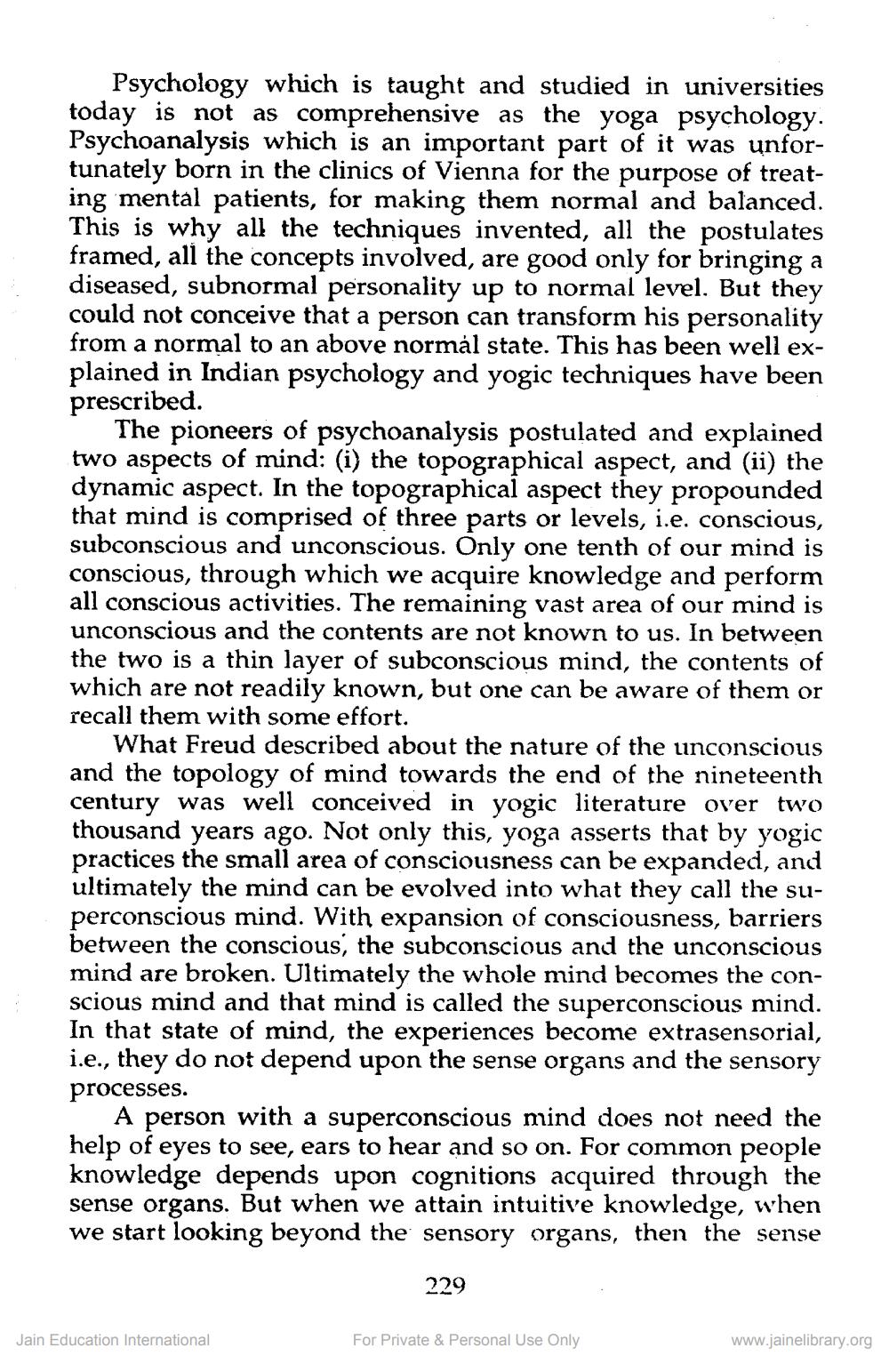________________
Psychology which is taught and studied in universities today is not as comprehensive as the yoga psychology. Psychoanalysis which is an important part of it was unfortunately born in the clinics of Vienna for the purpose of treating mental patients, for making them normal and balanced. This is why all the techniques invented, all the postulates framed, all the concepts involved, are good only for bringing a diseased, subnormal personality up to normal level. But they could not conceive that a person can transform his personality from a normal to an above normál state. This has been well explained in Indian psychology and yogic techniques have been prescribed.
The pioneers of psychoanalysis postulated and explained two aspects of mind: (i) the topographical aspect, and (ii) the dynamic aspect. In the topographical aspect they propounded that mind is comprised of three parts or levels, i.e. conscious, subconscious and unconscious. Only one tenth of our mind is conscious, through which we acquire knowledge and perform all conscious activities. The remaining vast area of our mind is unconscious and the contents are not known to us. In between the two is a thin layer of subconscious mind, the contents of which are not readily known, but one can be aware of them or recall them with some effort.
What Freud described about the nature of the unconscious and the topology of mind towards the end of the nineteenth century was well conceived in yogic literature over two thousand years ago. Not only this, yoga asserts that by yogic practices the small area of consciousness can be expanded, and ultimately the mind can be evolved into what they call the superconscious mind. With expansion of consciousness, barriers between the conscious, the subconscious and the unconscious mind are broken. Ultimately the whole mind becomes the conscious mind and that mind is called the superconscious mind. In that state of mind, the experiences become extrasensorial, i.e., they do not depend upon the sense organs and the sensory processes.
A person with a superconscious mind does not need the help of eyes to see, ears to hear and so on. For common people knowledge depends upon cognitions acquired through the sense organs. But when we attain intuitive knowledge, when we start looking beyond the sensory organs, then the sense
Jain Education International
229
For Private & Personal Use Only
www.jainelibrary.org




